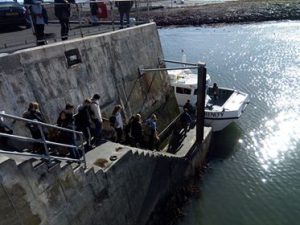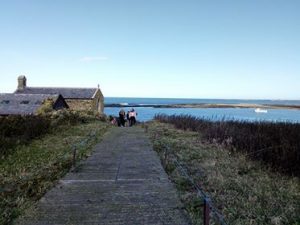I’ve been working with the North Pennines Area of Outstanding Natural Beauty on a number of projects. For this one, I got the fun of analysing the data and making the poster, while Alistair had the fun of travelling up to the IUCN conference and sharing our findings; we have some good indications that blocking the drains is effective. The photo of the blocked drain in the bottom left is a bit of a cheat as it is from drain blocking by the Northumberland Wildlife Trust 20 years back on Coom Rigg (Border Mire). But it matched my colour scheme (and is exactly what we want to achieve), so was difficult not to include.
Monthly Archives: October 2018
Summer interns – monitoring Kielder Mires bog quality using satellite images
2 amazing summer interns and 1 incredibly tenacious MSc student set out to survey 40 of the incredibly beautiful, bleak, remote Kielder Mires this summer. Bursaries from Natural England enabled this, and NE worked with us to try to establish a link between quality of the bogs as determined by the vegetation, with that derived using satellite image techniques. The interns found muscles they never knew existed as they plodged through the deep heather and bouncy Sphagnum. They were rewarded on their last day with the carnivorous plant, Drosera anglica (great sundew) – which we don’t see around these parts that much. I only have a screenshot of it. 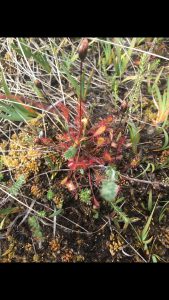
2nd year placement talks – for Natural and Environmental Science studetns
It is great to have joint events within our fairly recently formed School of Natural and Environmental Sciences. Students who have returned from placements in places ranging from Italy to Taunton reported on their experiences: caring for snakes, developing food and toiletries that are about to be released onto the market, and running investigative projects that will change how companies work.
Seventy 2nd year students from Chemistry, Biology, Agriculture, Food Marketing and Environmental Science attended in our joint event, brilliantly run by NU Careers Service. I just had to sit back and enjoy the stories from our returning students and feel the excitement and anticipation of our 2nd years as they will start to apply for year long placements.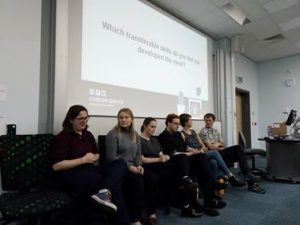
Environmental Science – Field Work in Stage 3
The wettest windiest day of the year, hence impossible to get not blurred photos, but we soldiered on, working with Abi from Northumberland National Park. We collected water and vegetation data to continue to monitor the restoration work on Lampert bog: Po is monitoring the water table depth while the others are looking at dissolved organic carbon, the effectiveness of the brash and woodchip for stabilising and vegetating the reprofiled gullies, and the effect of the brash cutting on the bog communities.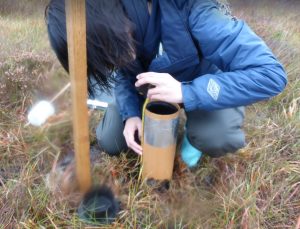
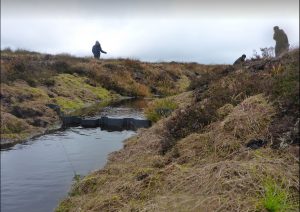
Environmental Science Stage 1 induction
Induction week for Environmental Science and Earth Science students. We took the bus then boat to one of my favourite places: the astoundingly beautiful Northumberland Coast and the Farne Islands. Sadly the puffins had gone, but the seals were still blubbering about and the weather was absolutely beautiful. Only one or two of the students felt the effects of the waves on their digestive systems – i think it was the waves that were the culprits, not the freshers week socialising.